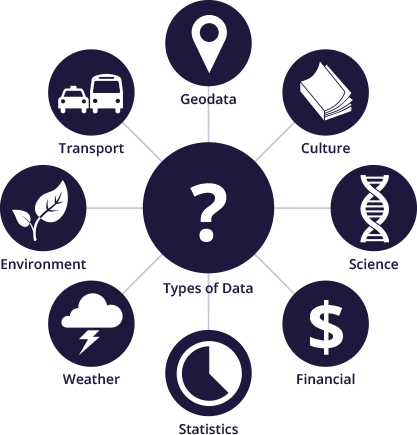New site: “Make government better, together. Stories of open source, open data, and open government.
This site is an open source effort to showcase best practices of open sourcing government. See something that you think could be better? Want to submit your own story? Simply fork the project and submit a pull request.
…
Ready to get started on GitHub? Here are some ideas that are easy to get your feet wet with.
Feedback Repository
GitHub’s about connecting with developers. Whether you’re an API publishing pro, or just getting started, creating a “feedback” repository can go a long way to connect your organization with the community. Get feedback from current and potential data consumers by creating a specific repository for them to contribute ideas and suggestions for types of data or other information they’d like to see opened. Here’s how:
- Create a new repository
- Choose your organization as the Owner
- Name the repository “feedback” or similar
- Click the checkbox to automatically create a
README.mdfile
- Set up your Readme
- Click
README.mdwithin your newly created repository - Click
Edit - Introduce yourself, describe why you’ve joined GitHub, what you’re hoping to do and what you’d like to learn from the development community. Encourage them to leave feedback through issues on the repository.
- Click
Sample text for your README.md:
# City of Gotham Feedback
We've just joined GitHub and want to know what data would be interesting to our development community?
Leave us comments via issues!
Open source a Dataset
Open sourcing a dataset can be as simple as uploading a .csv to GitHub and letting people know about it. Rather than publishing data as a zip file on your website or an FTP server, you can add the files through the GitHub.com web interface, or via the GitHub for Windows or GitHub for Mac native clients. Create a new repository to store your datasets – in many cases, it’s as easy as drag, drop, sync.
GitHub can host any file type (although open, non-binary files like .csvs tend to work best). Plus, GitHub supports rendering certain open data formats interactively such as the popular geospacial .geojson format. Once uploaded, citizens can view the files, and can even open issues or submit pull requests with proposed fixes.
Explore Open Source Civic Apps
There are many open source applications freely available on GitHub that were built just for government. Check them out, and see if it fits a need. Here are some examples:
- Adopt-a – This open source web app was created for the City of Boston in 2011 by Code for America fellows. It allows residents to “adopt” a hydrant and make sure it’s clear of snow in the winter so that emergency crews can locate them when needed. It has since been adopted in Chicago (for sidewalks), Seattle (for storm drains), and Honolulu (for tsunami sirens).
- StreetMix – Another creation of Code for America fellows (2013) this website, www.streetmix.net, allows anyone to create street sections in a way that is not only beautiful but educational, too. No downloading, no installing, no paying – make and save your creations right at the website. Great for internal or public community planning meetings.
- We The People – We The People, the White House’s petitions application hosted at petitions.whitehouse.gov is a Drupal module to allow citizens to submit and digitally sign petitions.
Open source something small
Chances are you’ve got something small you can open source. Check in with your web or new media team, and see if they’ve got something they’ve been dying to share or blog about, no matter how small. It can be snippet of analytics code, or maybe a small script used internally. It doesn’t even have to be code.
Post your website’s privacy policy, comment moderation policy, or terms of service and let the community weigh in before your next edit. No matter how small it is, getting your first open source project going is a great first step.
Improve an existing project
Does you agency use an existing open source project to conduct its own business? Open an issue on the project’s repository with a feature request or a bug you spot. Better yet, fork the project, and submit your improvements. Even if it’s one or two lines of code, such examples are great to blog about to showcase your efforts.
Don’t forget, this site is an open source project, too. Making an needed edit is another great way to get started.”


